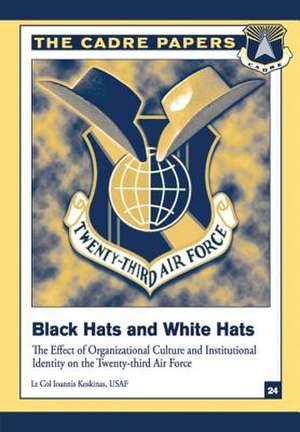Black Hats and White Hats
Autor Lieutenant Colonel Usaf Ioan Koskinas Contribuţii de Air University Press, Air University Pressen Limba Engleză Paperback
Preț: 135.85 lei
Nou
Puncte Express: 204
Preț estimativ în valută:
25.100€ • 26.98$ • 21.73£
25.100€ • 26.98$ • 21.73£
Carte disponibilă
Livrare economică 22 februarie-08 martie
Preluare comenzi: 021 569.72.76
Specificații
ISBN-13: 9781479196548
ISBN-10: 1479196541
Pagini: 234
Dimensiuni: 170 x 244 x 12 mm
Greutate: 0.38 kg
Editura: CreateSpace Independent Publishing Platform
ISBN-10: 1479196541
Pagini: 234
Dimensiuni: 170 x 244 x 12 mm
Greutate: 0.38 kg
Editura: CreateSpace Independent Publishing Platform
